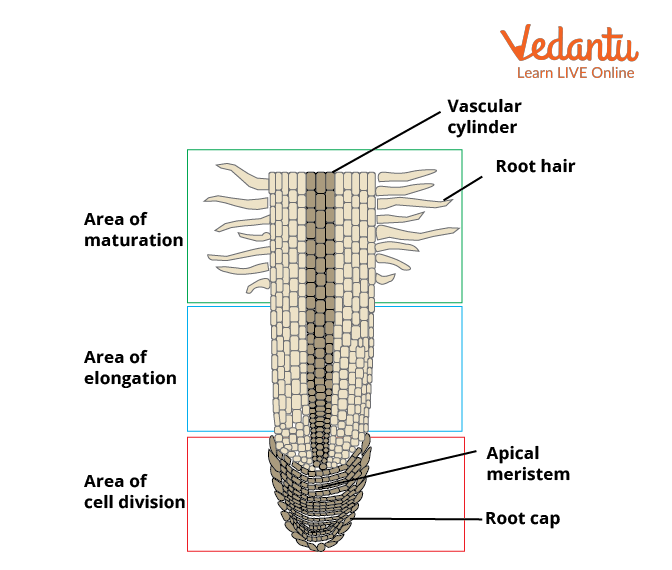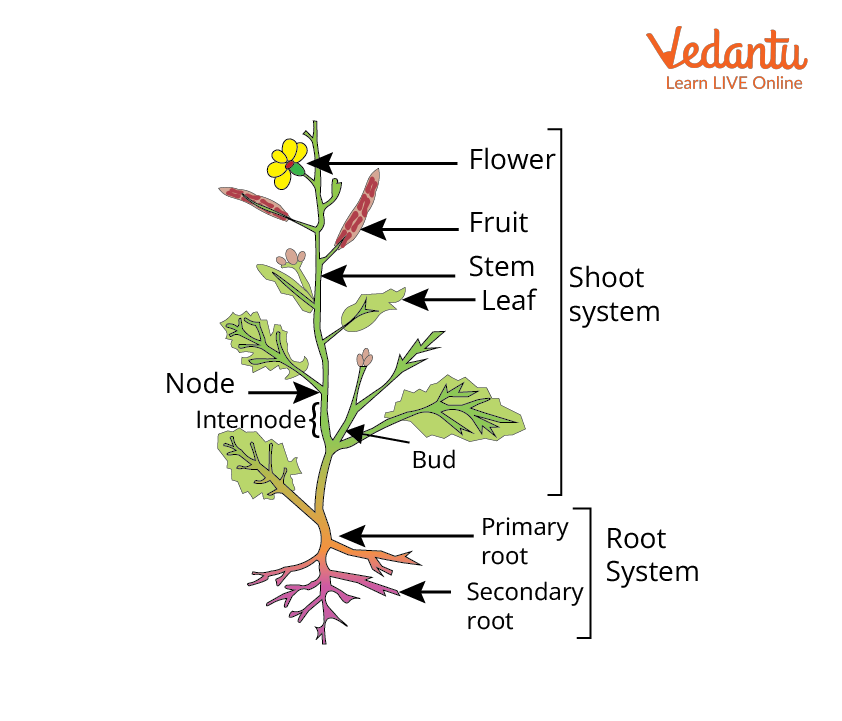What Is the Role of Shoot and Stem in Plants?
The two terms shoot and stem are generally referred to as one but in biological concept, both stem and shoot are different structurally and functionally. A shoot is part of the plant which is visible, present above the ground. It consists of different organs like leaves, fruits, and lateral and apical buds, involved in photosynthesis. In general terms shoot is referred to as the young plant that rose just after the germination of seed.
The stem is the central axis of the plant, consisting of nodes and internodes. Leaves, fruits, and flowers all are present on the stem axis. The main function of the stem is to transport the sap (water and minerals) and food to all the parts and provide structural support.
What are Shoots and Stems?
The Shoot: During the germination of seed, the outgrowth from plumule results in the formation of the shoot. The young shoots are rich in fibres as secondary cell growth has not yet been accomplished. In many woody plants, short shoots are present they are called spurs example conifers and Ginkgo.
The Stem: Stems are the central axis of the plants bearing nodes and internodes. Nodes are the regions on the stem where at least one leaf, bud or branching twigs appear. Internodes are the spaces between the nodes.
Interestingly, the strawberry we eat is a modified stem known as stolons. Other modifications of the stem that can be seen in day-to-day life are tubers, bulbs, and rhizomes which grow underground as roots but are stems that store food.
Differences Between Shoot and Stem
What Is the Root System and Shoot System?
Root System: Roots arise from radicles and are essential for absorbing water and minerals (sap) from the soil. The roots are positively geotropic and negatively phototropic. As they descend deep inside the soil, the main root is called the primary root or tap root. In this process, they can give off lateral branches referred to as secondary or tertiary roots. The root system penetrates deep inside the soil for sap absorption and anchorage.
Anatomically, Roots Consist of Four Parts:
Root Cap: It is the protective tissue present at the tip of the root also called calyptra. The root cap is characterised to have specialised cells called statocytes for gravity perception.
Apical Meristem: Present above the root cap, these are the regions consisting of actively dividing cells to form new root cells.
Elongation Zone: The regions where root cells divide elongate and mature. It is the area where new root cells proliferate.
Root Hair: Fine hair-like structures present over the root for maximum absorption of water and minerals.

Parts of Root System
There are two types of root system:
Tap root system
Fibrous root system
The differences between tap and fibrous root systems are shown below in the table:
Functions of Root
The roots provide anchorage to the plant to stand erect.
The roots are specialised to absorb water and minerals from the soil necessary for photosynthesis.
Some roots store food in them like carrot, radish, beetroot, etc.
Shoot System: It is the aerial part of the plant that is positively phototropic. It consists of a stem and its organs like leaves, nodes and internodes, flowers, buds, and branches. The main parts that organise to form the shoot system are:
Stem: The central structural axis having nodes and internodes. Nodes are regions on stems from which new leaves arise. The distance between the two nodes is called the internode.
Leaves: Leaves have special pigment chlorophyll to capture sunlight and transform it into chemical energy. This energy is in the form of glucose and starch to provide nutrition to plants.
Flower: In angiosperms plants, the condensed modified shoot is responsible for reproduction. The flower bears male and female parts for sexual reproduction.
Buds: These are protrusions on the stem arising from meristem that can develop into a flower, leaf, or shoot.

Root System and Shoot System
Parts of Shoot System
Epidermis: The outermost protective layer covered with cuticles is called the epidermis. The cells are densely packed to prevent the inner structure from desiccation.
Cortex: The layer beneath the epidermis has three layers, which are as follows:
Hypodermis: Layer having sclerenchymatous cells for mechanical support
Middle Layer: Parenchymatous layer mainly for photosynthesis
Endodermis: Innermost layer separating vascular tissue from the cortex
Stele: It comprises all the tissues present inside the endodermis. These include the pericycle, the vascular bundles, the medullary rays, and the pith.
Functions of Stem
The shoot system supports the organisation of different components of the plants, especially leaves so that they are well exposed to sunlight and atmosphere for competent photosynthesis and exchange of gases.
The shoot system has vascular bundles which are responsible for transporting water and minerals (xylem). The translocation of food is done by phloem.
Interesting Facts
Rhizomes- These are underground stems having small-scale leaves which are not photosynthetic. Example- ginger, Zingiber
Tubers- These are enlarged rhizomes where the eye of the potato is a lateral bud and the tuber body is modified to store starch in structures called amyloplast.
Important Questions
1. Why is the flower known as a modified shoot?
2. Give examples of underground shoot modification.
Ans: Shoots are modified for functions such as storage and reproduction. The examples are rhizomes, tubers and corms.
Key Features
Stem and shoot are different as the shoot is a young part including the stem and its part.
Root system is for absorption of nutrients and the shoot system is for food production.


FAQs on Shoot and Stem: Structures, Functions, and Importance
1. What is the main difference between a shoot and a stem?
The shoot system refers to all parts of a plant that are above the ground, which includes the stem, leaves, flowers, and fruits. The stem is the central part or main axis of the shoot system that supports all these other parts. So, the stem is a component of the shoot.
2. What are the primary functions of a typical plant stem?
A plant's stem has several key jobs to help the plant live and grow. Its main functions are:
- Support: It holds the leaves up towards the sunlight and provides a structure for flowers and fruits.
- Transport: It acts like a plumbing system, carrying water and minerals from the roots up to the leaves, and transporting food (sugars) from the leaves down to the rest of the plant.
- Growth: It produces new living tissue, allowing the plant to grow taller and wider.
3. How can you identify a stem, even if it's underground?
The key features that identify a stem are nodes and internodes. A node is the point on the stem where leaves or buds arise. An internode is the section between two nodes. Even an underground stem like a potato is identified as a stem because it has nodes, which we call 'eyes'.
4. Are a potato and a sweet potato both modified stems? Explain the difference.
This is a common point of confusion. A potato is a modified stem (an underground tuber) because it has buds, or 'eyes,' which can sprout into new plants. A sweet potato is a modified root (a tuberous root) that is swollen for food storage but does not have nodes or buds like a stem.
5. What are some examples of stems modified for different functions?
Stems can change their form to help plants survive in various ways. Some examples include:
- Food Storage: Underground stems like ginger (rhizome) and potato (tuber).
- Support: Stem tendrils in grapevines that coil around objects to help the plant climb.
- Protection: Thorns on citrus or Bougainvillea plants that protect them from being eaten.
- Photosynthesis: Flattened, green stems called phylloclades in cacti (Opuntia) that make food since they have no leaves.
6. Why would a plant develop an underground stem? Isn't that a root's territory?
While roots anchor the plant and absorb water, underground stems serve different purposes. They are excellent for food storage and, crucially, for vegetative propagation. Because these stems have buds, they can survive harsh conditions like frost or drought safely underground and then sprout into new plants when conditions improve. This is a powerful survival and reproduction strategy.
7. How do stem modifications like tendrils and thorns actually help a plant survive?
These modifications provide a direct survival advantage. Stem tendrils are found on plants with weak stems; they act like grappling hooks, allowing the plant to climb and compete for sunlight which it otherwise wouldn't reach. Thorns are a physical defence, acting like sharp spikes to discourage animals from eating the plant's leaves and stems.
8. What is the difference between a thorn and a spine?
Although they both look sharp, they have different origins. A thorn is a modified stem or branch, meaning it arises from a bud. You can see this in plants like Bougainvillea. A spine is a modified leaf or part of a leaf, designed to reduce water loss and provide protection, which is common in cacti.










